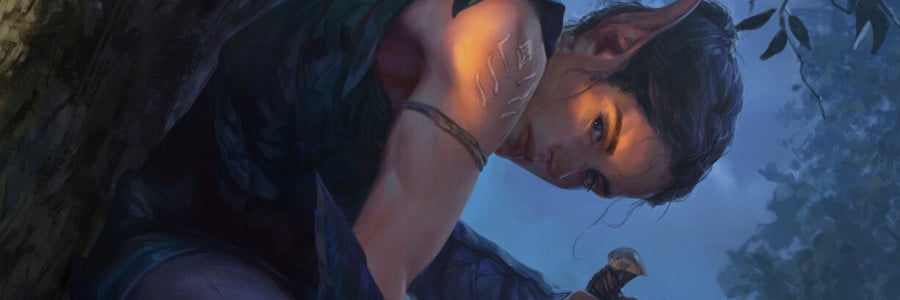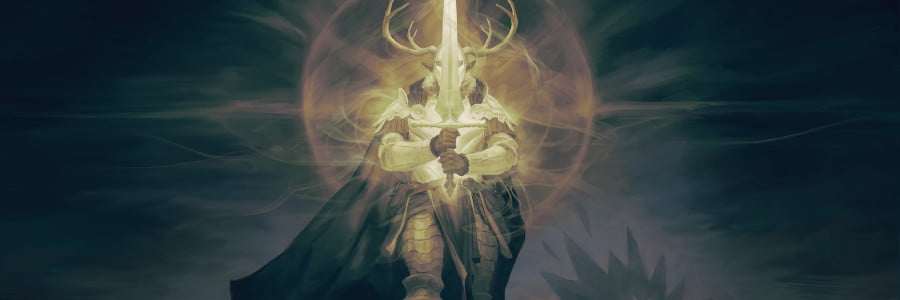I’ve written about elves in Cobrin’Seil, but it was writing that was largely about addressing them as an origin. What I wanted to address is the question of why elves can make half-elves, when they’re not quite like half-orcs. I even established there that elves are less a heritage and more a group of heritages, all drawing from the same singular space.
Of course, the language around this is complicated. After all, I call these things elves, but one of those types of elf is called elves. And I’m not doing this in the vein of Moon Elves and Sun Elves and Sand Elves and Dust Elves and Song Elves and Wood Elves and Winged Elves and I only had to make up one of those. But the general fantasy of ‘elf’ is something players love, but also it means a lot of different things. The distribution of ‘elves’ is a whole question unto itself, and I kind of needed to decide what I wanted them to do and what character fantasies are enabled.
Plus, that creates a question of how the world relates to the idea of the Elves, and well…
That’s a world building question.

Glossary Note: Conventionally, the term used in D&D for this mechanical package is race. This is the typical term, and in most conversations about this game system, the term you’re going to wind up using is race. For backwards compatibility and searchability, I am including this passage here. The term I use for this player option is heritage.
Building From First Principles
Because the most important story I was raised with had the opening phrase In the beginning, God created the heaven and the earth, I feel I have an unnatural interest in starting from the earliest principles I can. Like, the point at which I can say ‘I don’t think I need to worry about before that.’ Plus I get all brain wormsy about questions of ‘why are there half-elves,’ as you may have seen with my multiple pieces examining orcs.
Plus, ‘related heritages’ are weird. We can observe them in the real world; after all, wolves, and dogs, and dingos are all just runnin’ around doing stuff and they recognise one another and relate to one another, but they also don’t hire actuaries. It’s a funny thing that fantasy heritages represent something that absolutely does not exist that people nonetheless think does exist. Like, the whole reason I try to use the word ‘heritage’ is because ‘race,’ while a much better and more useful word for what I want to say, races as we see them in our society (in which we live) are absolutely nothing like them.
In the case of the things we group up as elves, there are at least two major groups and a few other ‘related’ groups that mean it’s time to bust out the cladistics chart.
When you talk about nonhuman species that can have major cultural and magical distinctions, there’s an artificial selection process at work. In some cases you can turbocharge this with the typical fantasy tools of a god or a wizard. I don’t want to do that here, and so instead, the development of elves is the course of time and natural progression.
This also takes a long time, long enough that cultures can forget about things. I don’t intend to give this a proper date and time — and this is largerly information that needs to exist as non-diegetic information. Like, no player character needs to know this, or benefits from it. If anyone in a game has this conversation, or talks about this stuff, it is probably wasting time or just for players to marinate in worldbuilding they like. The world building is there to give me explanations for world defining traits of these cultures, to serve as foundational principles and to answer questions to my satisfaction.
Basically, I want there to be a satisfying reason as to ‘why’ things are the way they are. I also like to see cultures in terms of things like relationships to history and material influences. This can also open some sketchy doors when applied to the real world, where there’s the whole thing about Social Darwinism — where you start making extrapolations about cultural groups in the real world as like oh you see the poor people are in Mexico because uh, there are lambs in Europe (and not at all related to the colonialism and the guns). The main way to keep perspective on that is to remember that in the real world
there aren’t fucking wizards.

A Cladistic History of Elfhood
This is gunna sound pretty straightforward because otherwise I’ll take forever to explain it and this article has already been split in half.
- Humans first encountered the feywild which had no anthropic entities; it was a lot more like a sort of Nature Blob, all weird and fractal and colourful
- The feywild perceived humans, realised they could perceive themselves, and thought that was weird, and immediately interested in trying that out
- They feywild then created some entities, now known as ‘The First Elves.’
- The first elves were absolute bastards, lacking in empathy and extremely privimite ability to reflect, while also magicing up a whole civilisation
- When the First Elves were created, the Feywild ‘rolled backwards’ into history, and created ancient ruins and relics for the First Elves, because the feywild didn’t even perceive time properly
- Someones fought against the First Elves some incident or other resulted in the First Elves retreating from common frame and became something more of story to humans.
- The stories of elves took two basic forms; one that emphasised them as a culture of meat-and-bone flesh creatures that lived in the woods and had no respect for people, and one which were elusive, aloof humanoids who knew everything and lived in invisible crystal palaces or whatever
- The story-born feywild-formed Elves over time became those stories; when rediscovered, these two conflicting ideas had become anchored apart, and humans who discovered them considered them separate – with the woodland living naturists known as ‘elves’ and the crystal palace people known as ‘eladrin.’
- The Eladrin are unconsciously aware of this, annoyed by this, but also because ‘Elf’ is the name of ‘that other group’, they can’t be ‘elves’ and as a result they developed further apart
- Elves, being human-like, were able to interbreed and have children with humans, resulting in half-elves
- As the Eladrin became more real they started to have real concerns, resulting in a splinter culture, the Shadar-Kai
- Due to a political struggle in the Elves’ territory, a splinter group there separated away from them, and took to a different visual aesthetic and practice. This group became the Drow.

This gives us a model a bit like this. The influence of humans on the Feywild and on elves is ‘special’ but it’s also incidental. Any other culture might have been the ones to kick it off, but it was humans, and therefore the reason why elves interact with humans in a ‘special’ way is just building on that. The ongoing stories creating the splintering is itself a byproduct of that ongoing relationship, and humans needed time for those stories to solidify. Once they did, though, there was a consensus of sorts, and elves are kind of stuck to it…
… but as the elves and eladrin got more and more real, they stopped being pure creatures of story stuff, and that meant while they had the culture created by the story, they now had real divergence from that story. It does make elves one of the more historically magical cultures, and that does have weirdness to them.
That’s where you come from: what is the culture that follows, and how do players look at them?
We’ll talk about it tomorrow.
1 Trackback